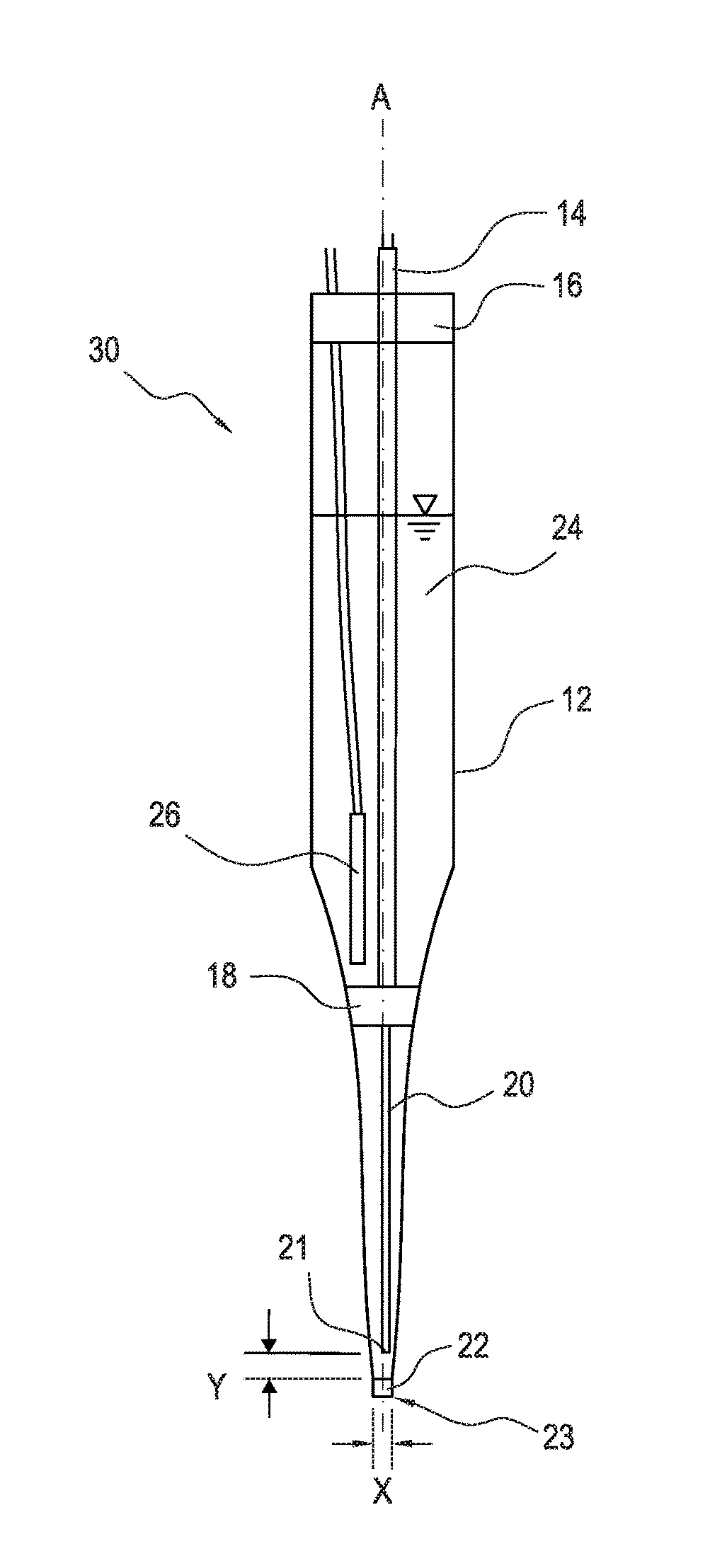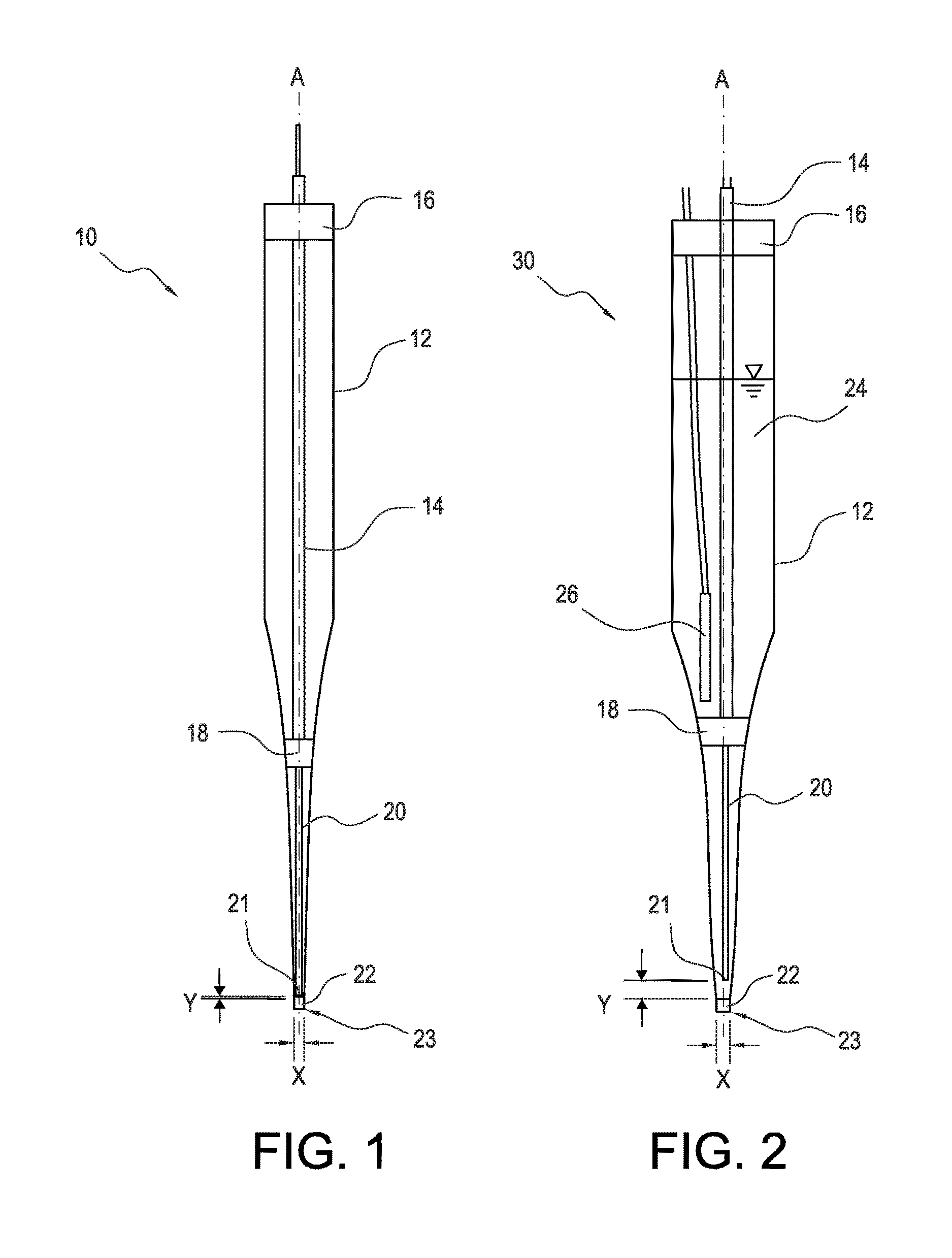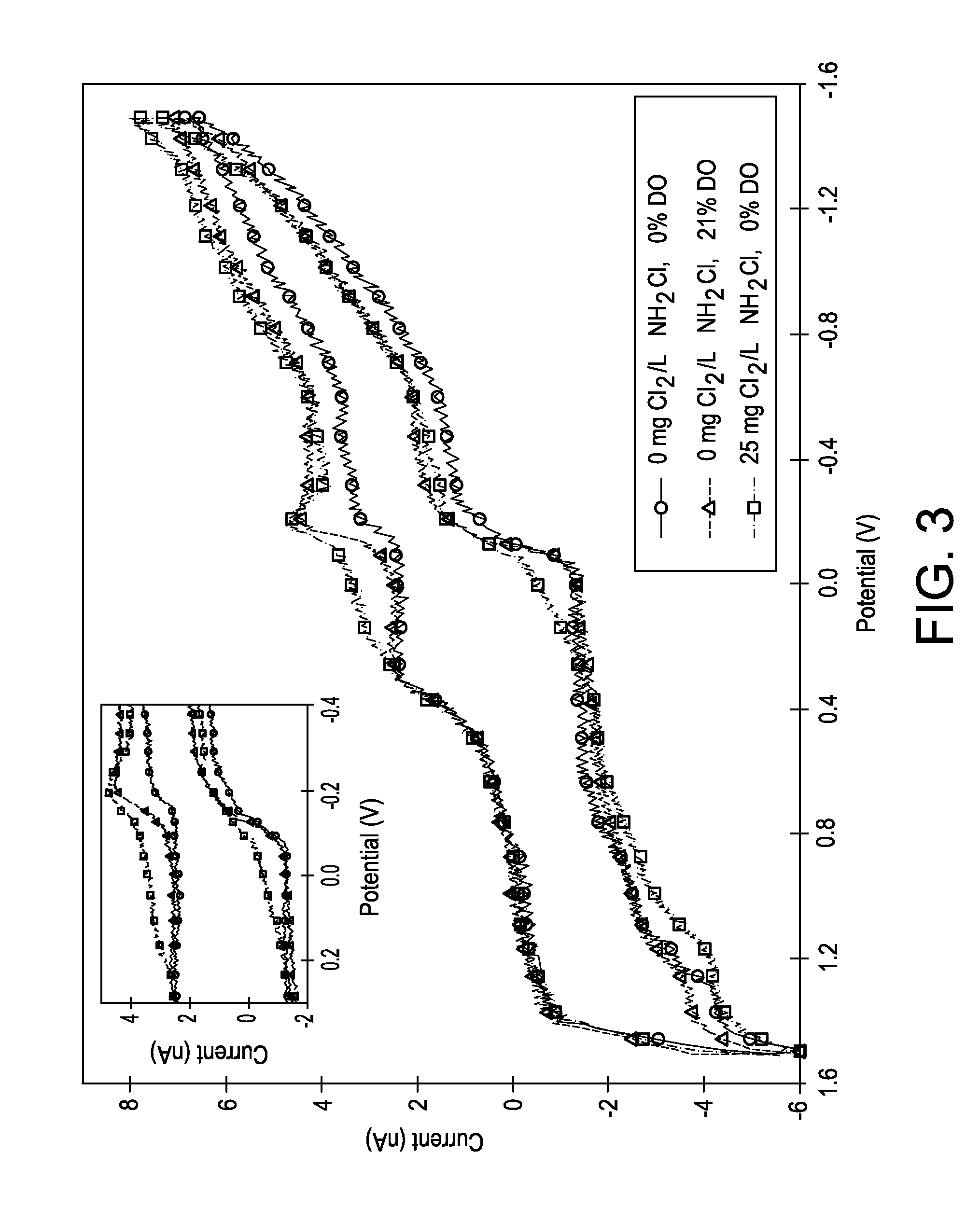Solid state amperometric chloramine sensor
a chloramine sensor and amperometric technology, applied in the field of solid-state amperometric chloramine sensors, can solve the problems of chloramine addition, water quality degradation, and non-compliance with existing regulations, and achieve the effects of simplifying its implementation, expanding its application range, and reducing nitrification episodes
- Summary
- Abstract
- Description
- Claims
- Application Information
AI Technical Summary
Benefits of technology
Problems solved by technology
Method used
Image
Examples
second embodiment
[0029]FIG. 1 shows a solid state amperometric sensor 10 which is an embodiment of the present invention which may be used in combination with a conventional Ag / AgCl reference electrode to measure the amount of chloramine in engineered or natural waters and aqueous solutions. The sensor 10 includes an elongated housing 12, in the form of a glass capillary, extending along a central axis A. The elongated housing 12 tapers to a capillary at the tip end 23 (lower end in FIG. 1). A conductive wire 14, for example a copper wire, extends through an upper seal 16 into the sealed interior space within the housing 12, along the central axis A, to a junction 18 within the housing 12. The upper seal 16 may be any conventional seal forming material such as glue or an elastomer, e.g., an epoxy rubber, as in the second embodiment shown in FIG. 2 and can have an internal diameter between 100 and 1500 microns, and preferably about 1100 microns.
[0030]A junction 18 within the housing 12 serves to elec...
first embodiment
[0035]FIG. 3 shows a cyclic voltammogram (CV) obtained using the first embodiment, i.e., FIG. 1, of the monochloramine sensor (˜10 μm tip diameter) with a solid gold wire for various monochloramine and dissolved oxygen (DO) concentrations. With no monochloramine and between 0% and 21% DO, positive (+) potentials after approximately 0 V when scanned in the positive direction (FIG. 3) result in no changes in electrode response with changes in DO concentration, indicating a lack of DO sensitivity. After 25 mg Cl2 L−1 of monochloramine addition, the electrochemical oxidation and reduction of monochloramine were observed, indicating two ranges for potential monochloramine detection.
[0036]Starting at approximately +0.8 V, the electrochemical monochloramine oxidation (Eq. 1 and Eq. 2) proceeds by reaction with gold surface oxides as follows:
2Au+2OH−→2AuOH+2e− (Eq. 1)
2AuOH+2NH2Cl→N2H4+2HCl+O2+2Au (Eq. 2)
[0037]However, as reported by A. N. Tsaousis, Amperometric Determination of Hypochloro...
PUM
| Property | Measurement | Unit |
|---|---|---|
| inner diameter | aaaaa | aaaaa |
| temperature | aaaaa | aaaaa |
| diameter | aaaaa | aaaaa |
Abstract
Description
Claims
Application Information
 Login to View More
Login to View More - R&D
- Intellectual Property
- Life Sciences
- Materials
- Tech Scout
- Unparalleled Data Quality
- Higher Quality Content
- 60% Fewer Hallucinations
Browse by: Latest US Patents, China's latest patents, Technical Efficacy Thesaurus, Application Domain, Technology Topic, Popular Technical Reports.
© 2025 PatSnap. All rights reserved.Legal|Privacy policy|Modern Slavery Act Transparency Statement|Sitemap|About US| Contact US: help@patsnap.com



